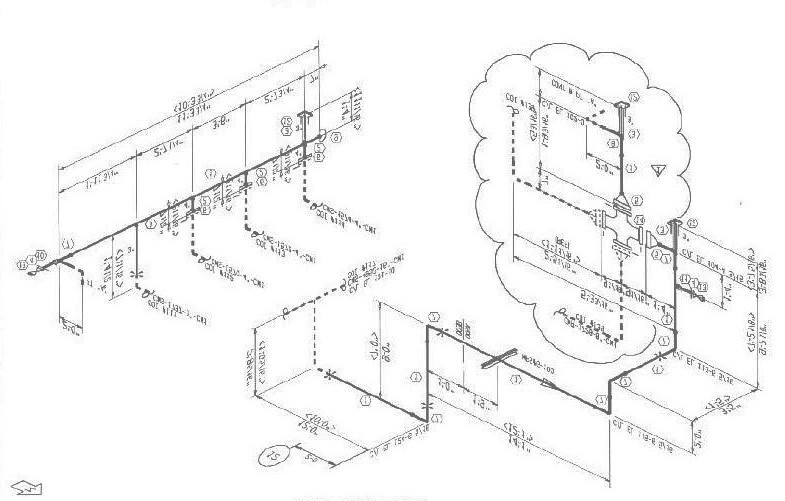

It can be applied to turbulent flow of water or other liquids with similar viscosity and temperature but has limited accuracy and applicability.Piping isometrics drawing are a type of pictorial drawings that show the three principal dimensions of an object in one view. Finally, there is Hazen-Williams equation, a simplified formula that relates pressure drop to fluid properties, pipe geometry, and flow rate.

The Colebrook equation is an implicit equation that relates the friction factor to the Reynolds number and relative roughness of the pipe, which also can be used to find the friction factor for Darcy-Weisbach equation but requires iterative or numerical methods to solve it. The Moody diagram is a graphical representation of the friction factor as a function of the Reynolds number and the relative roughness of the pipe, which can be used to find the friction factor for the Darcy-Weisbach equation but requires interpolation and approximation for some values. It can be applied to any type of flow regime and pipe shape, but requires the calculation or selection of the friction factor from charts or tables. The Darcy-Weisbach equation is a general formula that relates the pressure drop to the fluid properties, pipe geometry, friction factor, and flow rate. The higher the Reynolds number, the higher the friction factor and the pressure drop.Įstimating the pressure drop in process piping systems can be achieved with various methods, depending on the complexity and accuracy required. The friction factor depends on the Reynolds number, which is a ratio of the inertial and viscous forces in the fluid. Second, they affect the friction factor, which is a dimensionless coefficient that measures the resistance of the pipe wall to the fluid flow. Generally, laminar flow has lower pressure drop than turbulent flow, but it is less common in process piping systems. Transitional flow occurs when the flow regime changes from laminar to turbulent or vice versa. Turbulent flow occurs when the fluid moves in chaotic and irregular patterns, with high velocity and friction. Laminar flow occurs when the fluid moves in smooth and parallel layers, with low velocity and friction. First, they determine the type of flow regime, which can be laminar, turbulent, or transitional. The properties of the fluid, such as density, viscosity, compressibility, and temperature, influence the pressure drop in two ways.


 0 kommentar(er)
0 kommentar(er)
